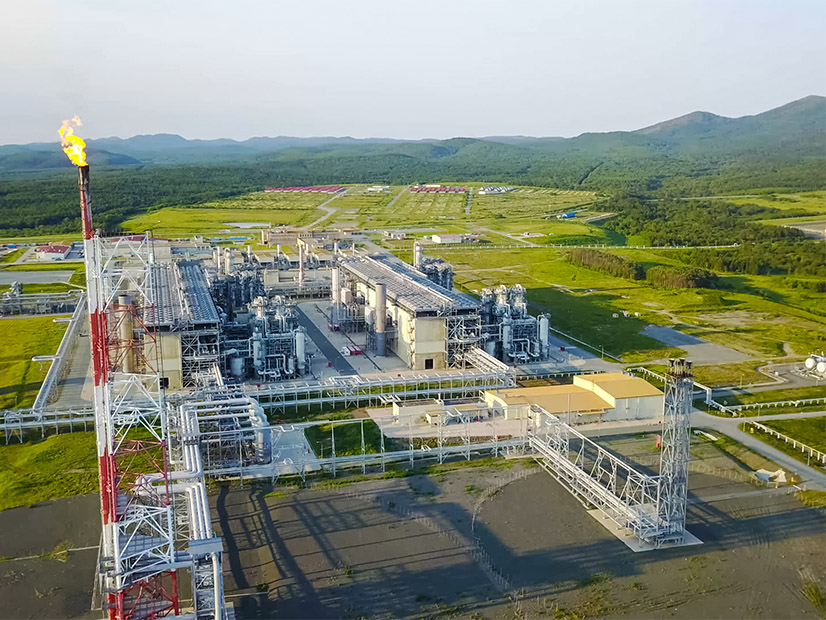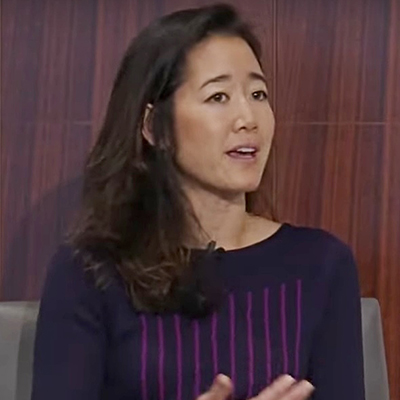
The U.S. is putting near-term initiatives into play to reduce long-term EU dependence on Russian LNG without disrupting climate goals, according to Melanie Nakagawa, special assistant to President Biden.
 Melanie Nakagawa, special assistant to the president and senior director for climate and energy at the National Security Council | Center for Strategic and International Studies
Melanie Nakagawa, special assistant to the president and senior director for climate and energy at the National Security Council | Center for Strategic and International Studies
“There’s real potential for Europe to signal the demand for U.S. LNG and for our U.S. LNG suppliers to provide that gas to them in the form of long-term contracts,” Nakagawa said Tuesday. “We can provide this gas in a way that is climate-aligned.”
Over the next five years, Europe wants to eliminate Russian gas imports, which make up 40% of the region’s gas consumption. In March, the U.S. and EU formed an energy security task force in response to Russia’s invasion of Ukraine, setting simultaneous goals of increasing U.S. LNG supply to Europe this year and ensuring demand in Europe for U.S. LNG through 2030.
Despite existing gas infrastructure limitations, meeting the long-term goal is possible with uncontracted volumes from facilities that are permitted or under construction in the U.S., Nakagawa said during a Center for Strategic and International Studies (CSIS) panel discussion. U.S. Energy Information Administration data show that U.S. liquefaction capacity will surpass the capacities of the top two global LNG exporters by the end of this year. And additional capacity is expected to come online in 2024.
“Through the task force, we’re engaging with key industry players that have the ability to move their volume to Europe,” Nakagawa said. “We’re talking to European member states that have indicated a willingness and an interest in building the import capacity to absorb this additional gas by 2025-2026.”
The key to making long-term LNG contracts feasible under U.S. and EU decarbonization plans is to put technologies, policies and incentives in place that reduce the carbon intensity of natural gas, she said.
In the U.S., Nakagawa sees policies for methane regulations and incentives for carbon capture and storage deployment as essential pathways for LNG suppliers. Powering LNG production processes and facilities with clean energy, she added, also will drive further emission reductions.
And in Europe, she said, the development of hydrogen-ready infrastructure and a green hydrogen economy will ensure the demand side supports decarbonization through 2050.
The long-term LNG contracts themselves also can include an element of flexibility so that Europe is not locked into the supply. Contract terms could allow for the resale of the contract so the supply can move to another region where it may be more beneficial depending on market forces, Nakagawa said.
“We see that in the U.S., where we have destination-flexible contracts,” she said. “Volumes and cargoes have been moving from one destination to another over the past several months.”
CSIS Viewpoint
The U.S. should be able to help cut Russian LNG exports through increased production without increasing greenhouse gas emissions, but that will take “creative policies,” according to Nikos Tsafos, CSIS’ James R. Schlesinger chair for energy and geopolitics.
Addressing a secure LNG supply in the middle of the Russia-Ukraine war and keeping climate targets in mind will require more voices at the table, he said in a presentation on a CSIS report on energy security and climate.
“There’s been a lot of effort from the U.S. government on the diplomatic front to figure out a way to reallocate energy supplies so that more goes to Europe,” he said. “We think that this is something that should be expanded and try to be more inclusive; try to bring in the major players and talk about how we’re going to manage the market.”
Those major players should include the U.S., Australia and Qatar as exporters and China, Japan, Korea, India and the EU as importers.
“You can’t really manage this market purely through price,” he said, adding that buyers and sellers can work together to manage the market while there is “enormous stress.” The process would allow for streamlined decision-making and opportunities to reduce imports, according to the report.
Signaling a need for U.S. LNG developers to expand capacity would support long-term reductions in Russian exports, but the current market signals are “a mess,” Tsafos said.
There are “relatively straightforward” alternatives to expand supply quickly without “locking in emissions” in the long term, he said. Public money, for example, can support the development of LNG projects that are eventually returned to state control, unless they are meeting net-zero-emissions goals, according to the report. Further restrictions can be set related to project methane emissions to qualify for public funding.


